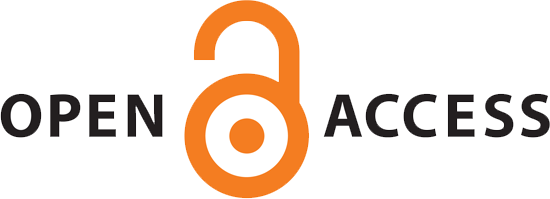Evaluation of the Effect of Nebulized Dexmedetomidine on Attenuating the Hemodynamic Response to Intubation during Entropy-Targeted Anesthesia
Abstract
Background: Laryngoscopy and intubation cause transient hemodynamic changes within thirty seconds after intubation. Dexmedetomidine, a selective alpha 2 adrenoceptor agonist, has been used to blunt this response via routes like intravenous, intranasal, and nebulization. The efficacy of nebulized dexmedetomidine in reducing the response to laryngoscopy and tracheal intubation with the additional benefit of reducing the propofol dose was evaluated during this study. Entropy monitoring was used to achieve adequate anesthetic depth.
Methods: This prospective, randomized, and comparative study was conducted on 120 ASA 1-2 patients. Patients were nebulized with dexmedetomidine 1 μg/kg body weight in 5 ml normal saline in group D and only 5 ml normal saline in group C twenty minutes before induction of anesthesia. Anesthesia was induced with an injection of propofol under entropy guidance. Hemodynamic parameters were noted at baseline, after nebulization, immediately after intubation, and up to 10 minutes. The incidence and severity of sore throat were noted in the postoperative period.
Results: Demographics were comparable. After laryngoscopy and intubation, the increase in heart rate and blood pressure was much lower in the dexmedetomidine group compared to the saline group. Furthermore, the requirement of propofol to achieve an entropy of 40–50 and the incidence and severity of postoperative sore throats in the dexmedetomidine group were significantly lower than in the normal saline group.
Conclusion: Administration of nebulized dexmedetomidine 1 µg/kg preoperatively effectively attenuates the hemodynamic response to laryngoscopy and intubation, with more stable hemodynamics and no side effects.
[2] Charuluxananan S, Kyokong O, Somboonviboon W, Balmongkon B, Chaisomboonpan S. Nicardipine versus lidocaine for attenuating the cardiovascular response to endotracheal intubation. J Anesth. 2000;14:77–81.
[3] Hall JE, Uhrich TD, Ebert TJ. Sedative, analgesic and cognitive effects of clonidine infusions in humans. Br J Anaesth. 2001;86:5–11
[4] Sharma S, Suthar OP, Tak ML, Thanvi A, Paliwal N, Karnawat R. Comparison of esmolol and dexmedetomidine for suppression of haemodynamic response to laryngoscopy and endotracheal intubation in adult patients undergoing elective general surgery: A prospective, randomized controlled double-blinded study. Anesth Essays Res. 2018;12:262-6.
[5] Zanaty OM, El Metainy SA. A comparative evaluation of nebulized dexmedetomidine, nebulized ketamine, and their combination as premedication for outpatient pediatric dental surgery. Anesth Analg. 2015;121:167-71.
[6] Lawrence CJ, De Lange S. Effects of a single pre-operative dexmedetomidine dose on isoflurane requirements and peri-operative haemodynamic stability. Anaesthesia. 1997;52:736-44.
[7] Singh G, Lnu H, Verma R, Shukla A, Singh P, Kohli M. Effects of Intranasal and Intravenous Dexmedetomidine on Hemodynamic Responses to Tracheal Intubation and Skull Pin Holder Fixation: A Double-Blinded, Randomized Controlled Trial. Cureus. 2025 Jan 5;17(1).
[8] Vakkuri A, Yli-Hankala A, Talja P. Time-frequency balanced spectral entropy as a measure of anaesthetic drug effect in central nervous system during sevoflurane, propofol, and thiopental anaesthesia. Acta Anaesthesiol Scand. 2004;48:666–71.
[9] Bruhn J, Röpcke H, Hoeft A. Approximate entropy as an electroencephalographic measure of anaesthetic drug effect during desflurane anaesthesia. Anesthesiology. 2000;92:715–26.
[10] Kumar NR, Jonnavithula N, Padhy S, Sanapala V, Naik VV. Evaluation of nebulised dexmedetomidine in blunting haemodynamic response to intubation: A prospective randomised study. Indian J Anaesth. 2020;64:874-9.
[11] Rajan S, Malayil GJ, Varghese R, Kumar L. Comparison of usefulness of ketamine and magnesium sulfate nebulizations for attenuating postoperative sore throat, hoarseness of voice, and cough. Anesth Essays Res. 2017;11:287-93.
[12] Shrivastava P, Kumar M, Verma S, Sharma R, Kumar R, Ranjan R, et al. Evaluation of nebulised dexmedetomidine given pre-operatively to attenuate hemodynamic response to laryngoscopy and endotracheal intubation: A randomised control trial. Cureus. 2022;14(5).
[13] Singh V, Pahade A, Mowar A. Comparison of intravenous versus nebulized dexmedetomidine for laryngoscopy and intubation-induced sympathoadrenal stress response attenuation. Anesth Pain Med. 2022;12.
[14] Misra S, Behera BK, Mitra JK, Sahoo AK, Jena SS, Srinivasan A. Effect of preoperative dexmedetomidine nebulization on the hemodynamic response to laryngoscopy and intubation: a randomized control trial. Korean J Anesthesiol. 2021;74:150-7.
[15] Walia C, Gupta R, Kaur M, Mahajan L, Kaur G, Kaur B. Propofol sparing effect of dexmedetomidine and magnesium sulfate during BIS targeted anaesthesia: A prospective, randomized, placebo controlled trial. J Anaesthesiol Clin Pharmacol. 2018;34:335-40.
[16] Kang WS, Kim SY, Son JC, Kim JD, Muhammad HB, Kim SH, et al. The effect of dexmedetomidine on the adjuvant propofol requirement and intraoperative haemodynamics during remifentanil-based anaesthesia. Korean J Anesthesiol. 2012;62:113.
[17] Thomas D, Chacko L, Raphael PO. Dexmedetomidine nebulisation attenuates post-operative sore throat in patients undergoing thyroidectomy: A randomised, double- blind, comparative study with nebulised ketamine. Indian J Anaesth. 2020;64:863-8.
[18] Bloor BC, Denham SW, Bellewille JP. Effects of intravenous dexmedetomidinepremedication on the dose requirement dexmedetomidine in humans. II:hemodynamic changes. Anaesthesia. 1992; 77:1134–42.
| Files | ||
| Issue | Article in Press |
|
| Section | Research Article(s) | |
| Keywords | ||
| Dexmedetomidine entropy laryngoscopy response nebulization propofol general anaesthesia | ||
| Rights and permissions | |

|
This work is licensed under a Creative Commons Attribution-NonCommercial 4.0 International License. |




